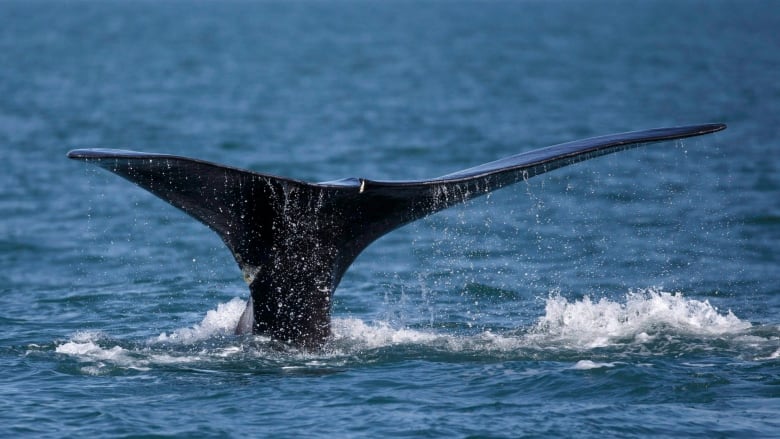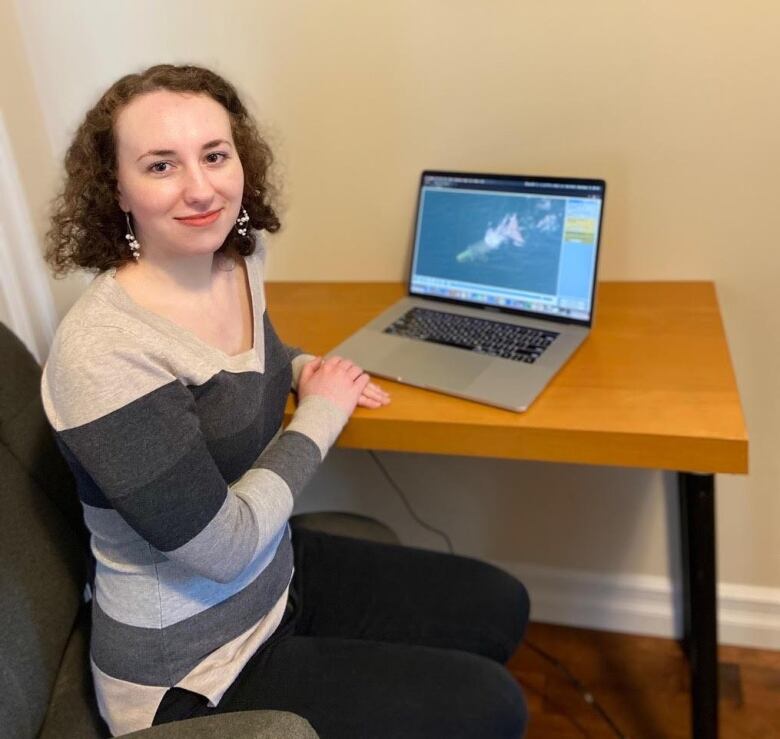Childhood dream to save whales is coming true for Dalhousie student
Olivia Pisano will help position satellites that can pinpoint right whales

Satellites, recognition software, artificial intelligence and a childhood dream are coming together in a project to protect endangered North Atlantic right whales in Canadian waters.
Olivia Pisano, a Dalhousie University PhD student, will help position satellites that are now capable of spying whales.
"A few years ago, this was just a fantasy, but these days satellite imagery is so detailed and so precise that we can actually see the individual characteristics of the whales," Pisano said in an interview in Halifax.
"We can see their fins, we can see their back tail. We can even start to distinguish between different species, which is something that we never thought we would be able to do."
'A dream come true'
For her, this is more than an academic exercise. She isfulfilling a lifelong ambition.
"As a high schooler, even as a child, my main dream was to just save the whales.
"That was what I've always wanted to do. And so now to be given an opportunity to potentially do that is just, it's a dream come true."
Pisano is part of a consortium that will use high-resolution satellite images of whales, machine learning to automatically identify them and algorithms to route large shipping away from areas where whales are detected.

The consortium is led by Global Spatial Technology Solutions, of Dartmouth. This week, the company was awarded a $1.1-million contract from the Canadian Space Agency to develop the system to detect whales.
It was one of five projects funded under a $5.3-million smartWhales program.
It's estimated about 366 North Atlantic right whales survive.
Since their unexpected appearance in the Gulf of St. Lawrence in 2017, 20 have died there.
"We should be able to avoid all of the ship strikes, which I believe account for a significant amount of the deaths because the whales come to the surface to eat the food and they can't hear very well," saidGSTSfounder and CEO Richard Colacz. "And that's where they're very susceptible to being hit by ships."
How they will do it
Success turns on programming the company's computer platform, called OCIANA.
The project needs to "teach" an algorithm to automatically detect whales when looking at optical images from space or sensor data from the water.
To narrow the search, satellites will look first for the food the whales eat copepods and other zooplankton. Although individually tiny, their blooms are large and move slowly.
Once a whale is confirmed, the computer program will look at all the vessels that could possibly intersect and provide recommendations to the ship and all the ships behind that vessel on course and speed alterations.
The information will show up as an alert on the company's marine management dashboard.
The OCIANA platform already processes data on oceanographic conditions, automatic ship identification and radar.
Kolacz said whale satellite images and data from whale sensors in the Gulf are another data point.
"The trick is at the same time correlating all of that data and making decisions."
Course directions sent quickly
He saidcourse directions will be sent to large vessels within "minutes or tens of minutes" of a confirmed whale detection, well ahead of any collision.
"Hopefully, we would be able to eliminate 100 per cent of the ship strikes as long as the ships follow the instructions that are provided to them."
The Canadian Space Agency contract gives the company 36 months to develop and evaluate its whale-detection system. Global hopes to add the capability to its platform within a year "for those people who want to use it."
'Saving such a beautiful species'
Meanwhile,Pisano has already looked through40,000 aerialimages looking to identify whales. She'll be looking through more images as shetrains the algorithm and pointsthe satellite.
The project is her thesis, and more, She said it is her calling.
"This is just what I do. And I'm so thrilled that I get to be a part of saving such a beautiful species and transforming the way that we monitor and conserve whales."
MORE TOP STORIES












_(720p).jpg)


 OFFICIAL HD MUSIC VIDEO.jpg)
.jpg)



























































































